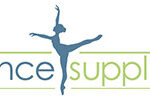Dancer Pose, or Natarajasana, is a powerful and beautiful yoga posture that embodies balance, strength, and grace – qualities highly valued in dance. This iconic pose, often simply called “Dancer,” challenges us both physically and mentally, inviting us to find our inner courage and poise, much like a dancer commanding the stage.
Inspired by the image of Shiva Nataraja, the Lord of the Dance, this asana is more than just a stretch; it’s a story told through the body. Shiva’s dance, depicted with a cobra, swirling dreadlocks, and a ring of fire, symbolizes the cosmic dance of creation and destruction. Incorporating yoga poses like Dancer into a dancer’s routine can enhance flexibility, balance, and body awareness, all while fostering a deeper connection to movement and expression.
[Imagine of a dancer in dancer pose on the bank of a river]
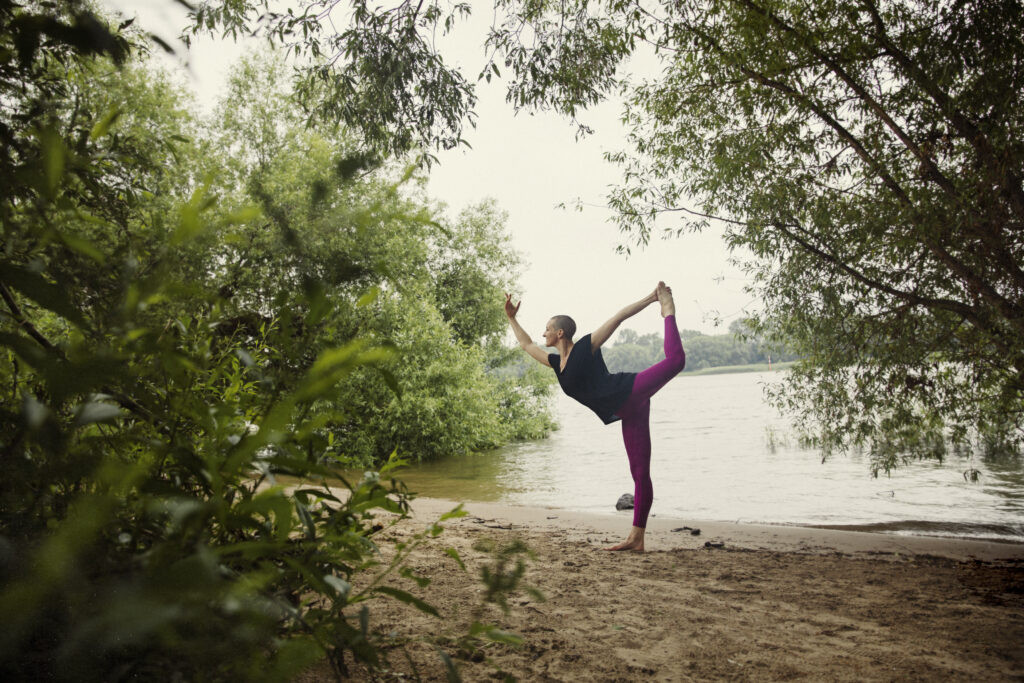 A dancer strikes a graceful Dancer Pose on the riverbank, embodying balance and strength.
A dancer strikes a graceful Dancer Pose on the riverbank, embodying balance and strength.
This article will explore the intricacies of Dancer Pose, providing modifications and insights to help dancers and yoga enthusiasts alike experience its full benefits. We’ll delve into the steps to achieve the pose, its variations, the inspiring story behind it, and the profound lessons it offers for both physical practice and personal growth.
Important Considerations Before You Begin
Before attempting Dancer Pose or any of its variations, it’s crucial to approach with awareness and caution. It’s important to acknowledge that I am sharing personal experiences and insights from trusted yoga experts, not providing medical advice. Always consult with a healthcare professional to address any health concerns and determine if yoga is suitable for you.
According to yoga expert Mark Stephens in Teaching Yoga, key areas of ध्यान (attention) in Natarajasana include the “Lower back, hamstrings and knee of the standing leg, shoulders if unstable or impinging.” (Teaching Yoga Location 4,091). Practicing mindfully, listening to your body, and respecting its limits is paramount.
Step-by-Step Guide to Dancer Pose (Natarajasana)
Jessamyn Stanley, in Every Body Yoga: Let Go of Fear, Get On the Mat, Love Your Body, highlights the adaptability of Natarajasana, offering both supported and unsupported approaches. Using props like a yoga strap can make the pose more accessible.
Here’s a breakdown based on Stanley’s instructions, with added details for clarity:
- Starting Position: Begin in Mountain Pose (Tadasana), standing tall with feet hip-width apart and arms at your sides.
- Engage Balance: Place your right hand gently on your right hip for stability. Bend your left knee, bringing your left heel towards your left glute.
- Grasp the Foot: Reach your left hand back and grasp the inside or outside of your left foot or ankle. Ensure a firm but gentle grip. If using a strap, loop it around your left foot and hold the strap with your left hand.
- Lift and Extend: Engage your leg muscles and begin to lift your left thigh away from the floor, pressing your foot into your hand or strap. This action initiates the backbend and lift.
- Hip Alignment: Keep your hips squared forward throughout the movement. Imagine your hip bones are headlights pointing straight ahead.
- Extend the Right Arm: Sweep your right arm forward and then up towards the ceiling, extending through your fingertips. This counter-balance helps with stability and deepens the pose.
- Deepen the Backbend: Draw your standing thigh slightly back and soften your chest forward, opening your heart center. Avoid forcing the backbend; focus on a gentle, lengthening stretch.
- Hold and Breathe: Maintain the pose for several breaths, focusing on smooth, even inhales and exhales.
- Release and Repeat: Gently release the pose, returning to Mountain Pose. Repeat on the opposite side.
Stanley emphasizes key points for optimal alignment and benefit: “Keep your hips even and neutral,” “actively press your foot into your hand or strap,” “keep a bend in your standing knee if necessary,” “press your tailbone to the floor while actively lifting your pubic bone toward your navel,” and “if you are holding on to a strap, if you have the flexibility, rotate your shoulder so that your bent elbow points to the ceiling.”
Mark Stephens offers slightly different cues in Teaching Yoga, focusing on a smooth, continuous movement: “From Tadasana, flex the right knee to draw the right foot up toward the right hip. Clasping the right foot with the right hand, rotate the right elbow in and up while extending the right leg back and up from the hip. Lift the left arm overhead, bend the left elbow, and clasp the right foot.” (Teaching Yoga Location 4,093-5).
Stephens highlights important elements for both yoga students and teachers: “Maintain pada bandha [foot lock] in the standing foot to stabilize the foot and ankle. Keep the standing leg straight and strong, avoiding locking the knee. Level the pelvis for spinal extension. Press the tailbone down, expand the chest, and draw shoulder blades forward to open the heart. If stable, release the head towards the foot and draw elbows together. Breathe!” (Teaching Yoga Location 4,096-9).
Dancer Pose Variations and Modifications
Exploring variations and modifications makes Dancer Pose accessible and beneficial for all levels, including dancers looking to enhance specific skills. Here are a few examples:
[Image of Low Side Dancer Variation]
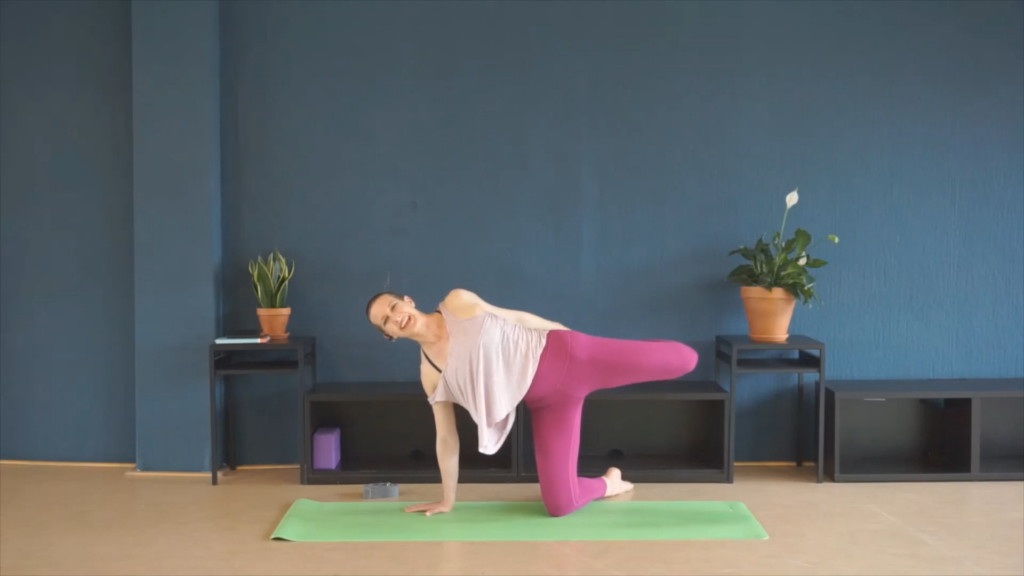 Low Side Dancer Variation: A modified dancer pose on the knees, offering a gentle stretch and balance challenge.
Low Side Dancer Variation: A modified dancer pose on the knees, offering a gentle stretch and balance challenge.
Low Side Dancer: This variation provides a similar stretch to standing Dancer but in a grounded position. Starting on hands and knees, extend one leg back and reach for the foot with the same-side hand. This is excellent for building balance and hamstring flexibility. A strap can be used here as well to bridge the gap if reaching the foot is challenging.
[Image of Low Twisted Dancer Variation]
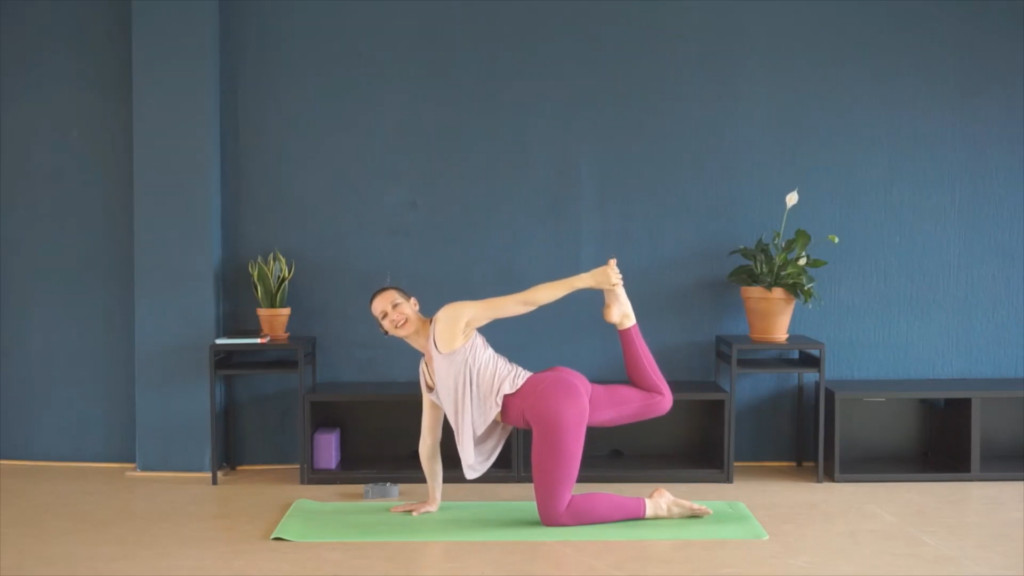 Low Twisted Dancer Variation: A seated twist with a leg extension, combining spinal rotation with the dancer pose stretch.
Low Twisted Dancer Variation: A seated twist with a leg extension, combining spinal rotation with the dancer pose stretch.
Low Twisted Dancer: This seated variation introduces a gentle twist, engaging the core and spine while stretching the quadriceps and hip flexors. Sit upright, bend one knee, and reach back with the opposite hand to grasp the foot, twisting the torso slightly.
[Image of Hand-to-Heart Quad Stretch]
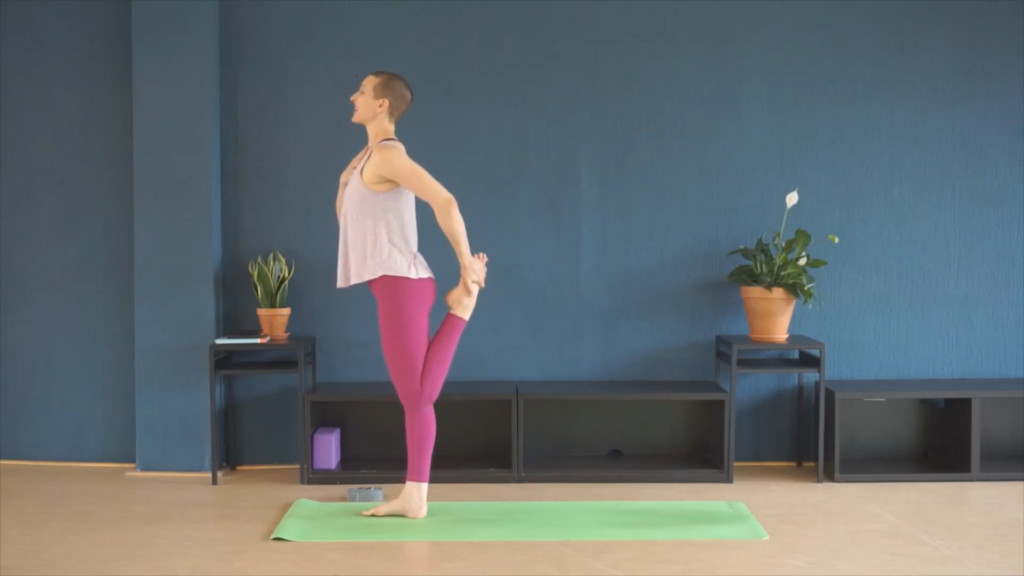 Hand-to-Heart Quad Stretch: A standing quad stretch variation, focusing on balance and heart opening.
Hand-to-Heart Quad Stretch: A standing quad stretch variation, focusing on balance and heart opening.
Hand-to-Heart Quad Stretch: This is a preparatory pose for Dancer, focusing on balance and quadriceps flexibility. Stand on one leg, bend the other knee, and hold the foot, drawing the heel towards the glutes while lifting the chest. This can be a pose on its own or a stepping stone to full Dancer Pose.
[Image of Dancer Pose with Strap]
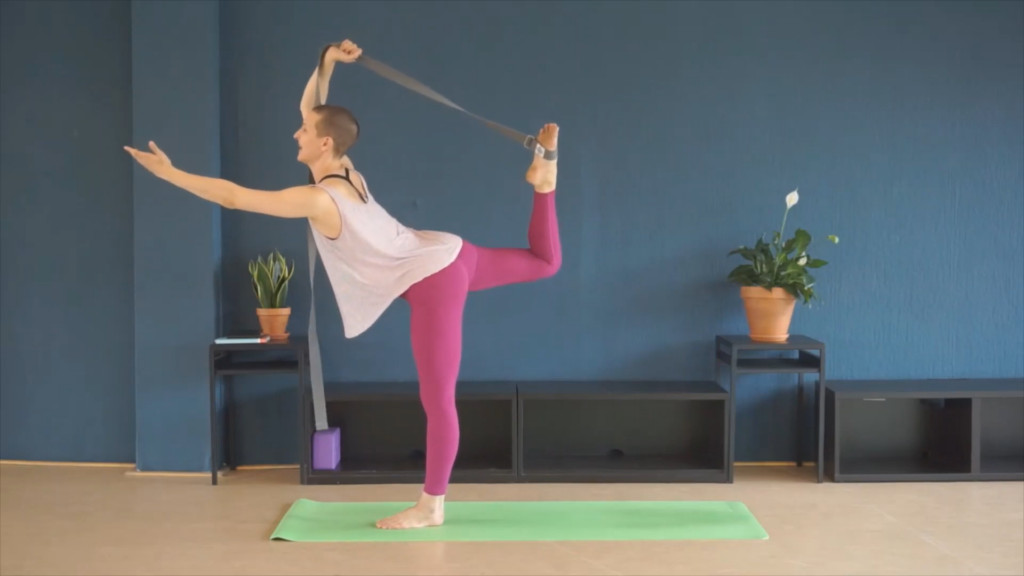 Dancer Pose with Strap: Utilizing a yoga strap to deepen the stretch and improve accessibility in Dancer Pose.
Dancer Pose with Strap: Utilizing a yoga strap to deepen the stretch and improve accessibility in Dancer Pose.
Dancer Pose with Strap: Using a yoga strap (or belt, towel) around the foot allows for a deeper stretch and makes the pose more accessible, especially for those with tight shoulders or hamstrings. It helps to maintain proper form and gradually deepen the backbend.
Remember to use a wall for support if needed, and explore different hand positions (mudras) to personalize your Dancer Pose. The possibilities are vast, encouraging you to find your unique expression within the pose.
The Inspiring Story of Natarajasana
To truly appreciate Dancer Pose, understanding its mythological roots is invaluable. In Myths of the Asanas: The Stories at the Heart of the Yoga Tradition, Alanna Kaivalya, Shiva Rea, and Manorama explain that Nataraja represents Shiva as the cosmic dancer, the destroyer and creator, eternally dancing to the rhythm of existence.
Key elements of this story enhance our understanding of the pose:
- Shiva as King Dancer: Shiva Nataraja is a manifestation of Shiva, one of the principal deities in Hinduism. He is depicted as the King of Dance, embodying dynamic energy and the perpetual motion of the universe. The imagery of snakes, dreadlocks, and the ring of fire are symbolic representations of his cosmic power.
- The Cycle of Samsara: The ring of fire surrounding Nataraj symbolizes samsara, the cycle of birth, life, and death. Shiva’s dance is within this circle, representing his mastery over this continuous cycle.
- The Illusion of Avidya: The cobra around Nataraj’s neck represents avidya, the misunderstanding of our divine nature. The cobra’s poison symbolizes this ignorance, and Shiva’s enlightened knowledge is the antidote, symbolized by the flame in his palm.
Lessons from Dancer Pose: Physical and Spiritual Benefits
What can dancers and individuals gain from practicing Dancer Pose?
Kaivalya and Rea highlight the psychological challenges inherent in Dancer Pose: “Natarajasana allows us to experience a couple of physical elements that can bring about fear in our bodies. Backbending and balancing both elicit fear because of the openness and bravery they require. We tend to store fear in our heart (according to the chakra system), and when we open the heart, we give ourselves an opportunity to let go of fear. Likewise, balancing gives us an opportunity to overcome our natural fear of falling and to be brave and free.” (Myths of the Asanas Location: 576-8).
Dancer Pose directly confronts two common fears:
- Fear of Backbending: Backbends can feel vulnerable as they open the chest and heart, areas where we often hold emotional tension.
- Fear of Balancing: Balancing poses challenge our stability and can trigger a fear of falling or losing control.
Yoga practices, including Dancer Pose variations and preparatory poses, help us gradually expand our comfort zone with both backbends and balancing. We build stability, improve balance, and increase flexibility in key areas like hips, back, and shoulders. Even dancers, despite their inherent flexibility and coordination, find unique challenges in Dancer Pose. Personal limitations, whether physical history or current flexibility levels, are common and are navigated through consistent and mindful practice.
Beyond the physical, Dancer Pose offers spiritual insights. It introduces concepts like avidya and abhinivesha, the fear of death, one of the kleshas (obstacles to freedom) outlined in Patanjali’s Yoga Sutras. Shiva, as the lord of destruction and change, teaches us that change is the only constant. Dancer Pose, and yoga in general, becomes a practice in navigating change, fostering self-awareness, and cultivating compassionate self-study.
Dianne Bondy and Kat Heagberg in Yoga Where You Are emphasize the importance of “Compassionate self-study [which] offers a path to meet yourself without judgement, just where you are and just how you are.” (p.212). This self-inquiry, practiced through yoga, meditation, and reflection, leads to greater freedom – freedom of movement, courage in facing life’s changes, and compassion for ourselves and others.
Just as Shiva dances freely, liberating himself from the fear of change, Dancer Pose invites us to find our own freedom. “In order to dance like Shiva, we must feel free. Freedom comes from knowing there is nothing that binds us permanently. Shiva’s dance is born out of a liberation from the fear of change. He teaches us to ride the wave of change as if we’re on a cosmic surfboard, coasting toward the shore of bliss.” (Myths of the Asanas Location: 564-5).
Reflective Questions for Your Practice
Consider these questions as you explore Dancer Pose and integrate yoga into your dance practice:
- What are your personal obstacles in practicing Dancer Pose?
- Which modifications or variations make the pose more accessible for you?
- What other yoga poses or dance movements do you find particularly challenging?
- What emotions arise for you when facing these challenges?
- How can modifications or variations help you access the benefits of these challenging poses or movements?
- How can a teacher or trusted guide support your practice and growth?
Blythe Stephens, MFA & Bliss Catalyst
she/her or they/them
A Blythe Coach: Dance Education & Coaching – move through life with balance, grace, & power
DISCLAIMER: A Blythe Coach recommends consulting your physician before starting any exercise program. Follow all safety instructions. Participating in exercise involves potential injury. By engaging, you assume all risks and voluntarily participate.

